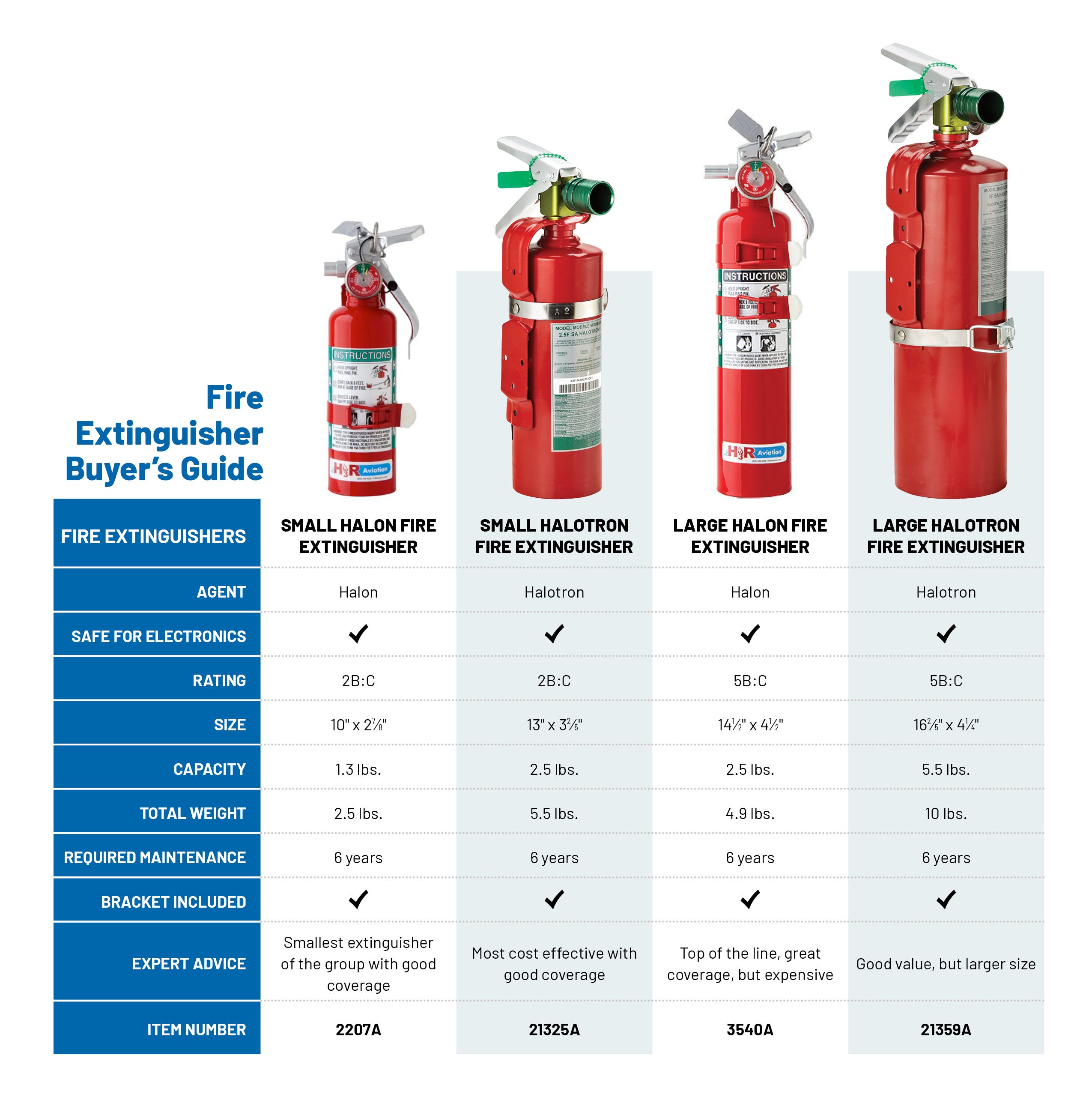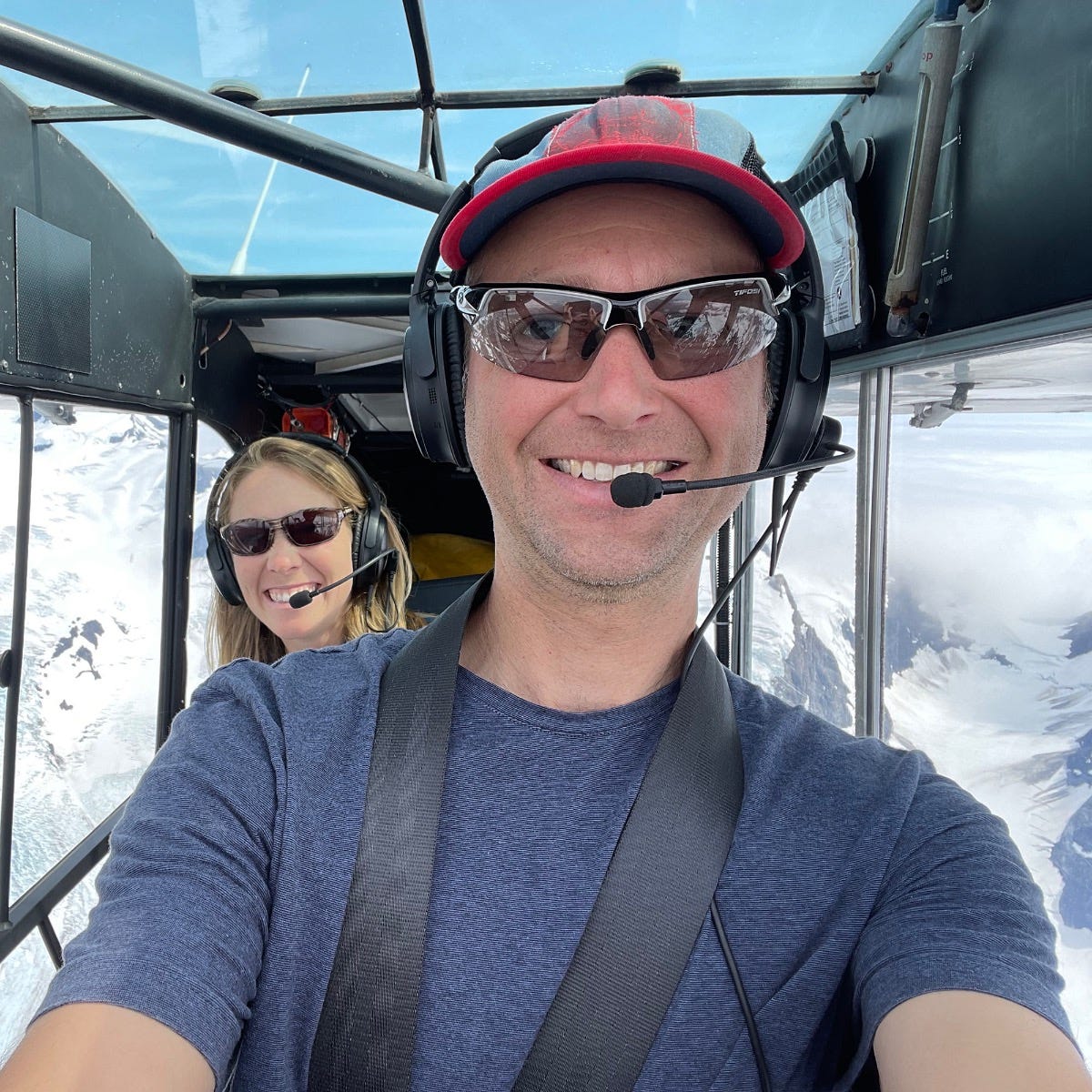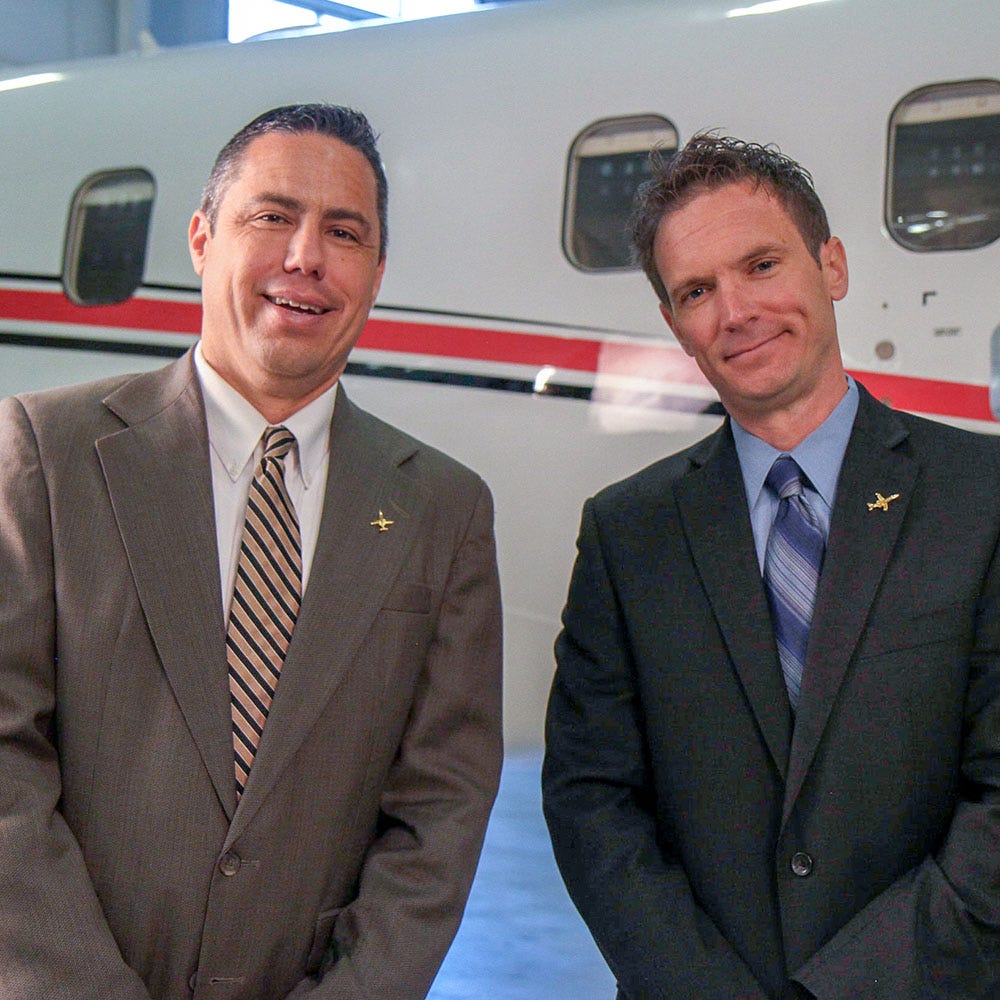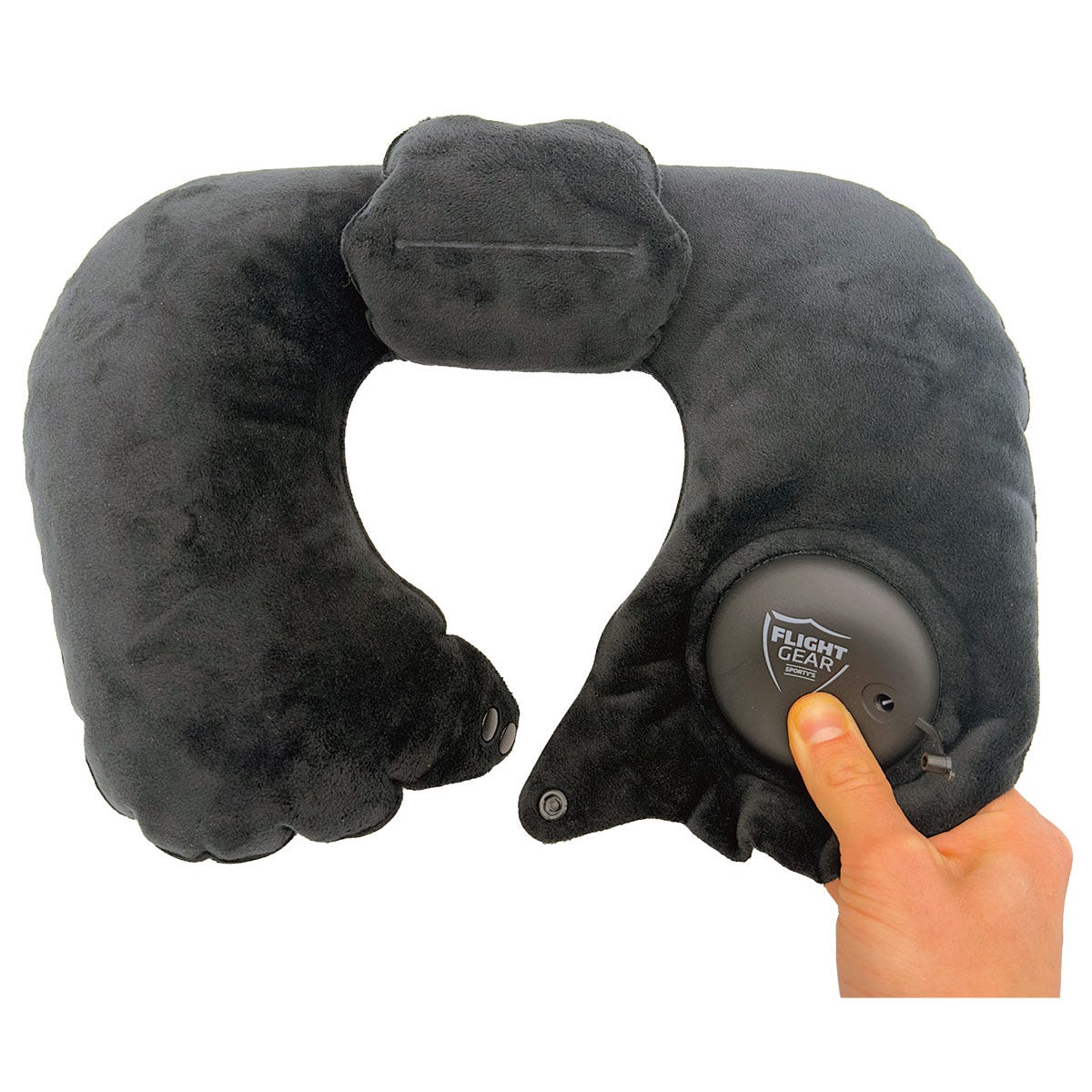Types of extinguishers
One thing is for sure: regular household extinguishers are not suitable for aviation use. A water or carbon dioxide agent can damage your avionics, corrode the airframe, or create unsafe conditions in the cockpit. For that reason, we recommend a very specific type of fire extinguisher for general aviation pilots.
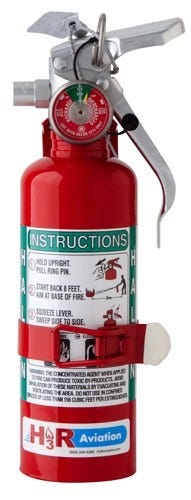 Sporty’s sells two types of extinguishers: Halon and Halotron. Both are safe for use in a cockpit as they do not leave a residue, do not corrode metal, and do not damage electronics or instruments. As both types are a liquid/gas form, they do not create clouds of blinding dust, a critical consideration in an emergency. They do not displace oxygen either, so breathe easy.
Sporty’s sells two types of extinguishers: Halon and Halotron. Both are safe for use in a cockpit as they do not leave a residue, do not corrode metal, and do not damage electronics or instruments. As both types are a liquid/gas form, they do not create clouds of blinding dust, a critical consideration in an emergency. They do not displace oxygen either, so breathe easy.
Halon fire extinguishers are recommended by the FAA for use in a cockpit. Pound for pound, they are nearly twice as efficient at killing fires compared to Halotron extinguishers. However, Halon was deemed an ozone-depleting product in 1994 and is no longer produced. Luckily for us, the material is recyclable so it is still available and Halon is legal for use in aviation. Unfortunately, the limited supply means prices are slowly rising.
Halotron extinguishers were created as a clean agent replacement when Halon production ceased. The cost-effective chemical can do everything that Halon can do, and is safe for airplanes. When comparing prices, Halotron is around half the price of Halon. The downside is that the weight and size of the extinguisher will usually be double that of its Halon counterpart in order to achieve the same amount of coverage.
Different ratings
When looking at the ratings on a fire extinguisher, you may be slightly confused about what the concoction of letters and numbers mean. In reality, they are quite easy to grasp after a little explanation.
When looking at an extinguisher rating, the first thing to note is how many square feet it can cover. For instance, 5B:C indicates that the extinguisher can cover 5 square feet. 2B indicates that the extinguisher would cover 2 square feet. Typically, a 2B would work fine for your normal 1-4 seat aircraft. For anything larger, we suggest a 5B extinguisher.
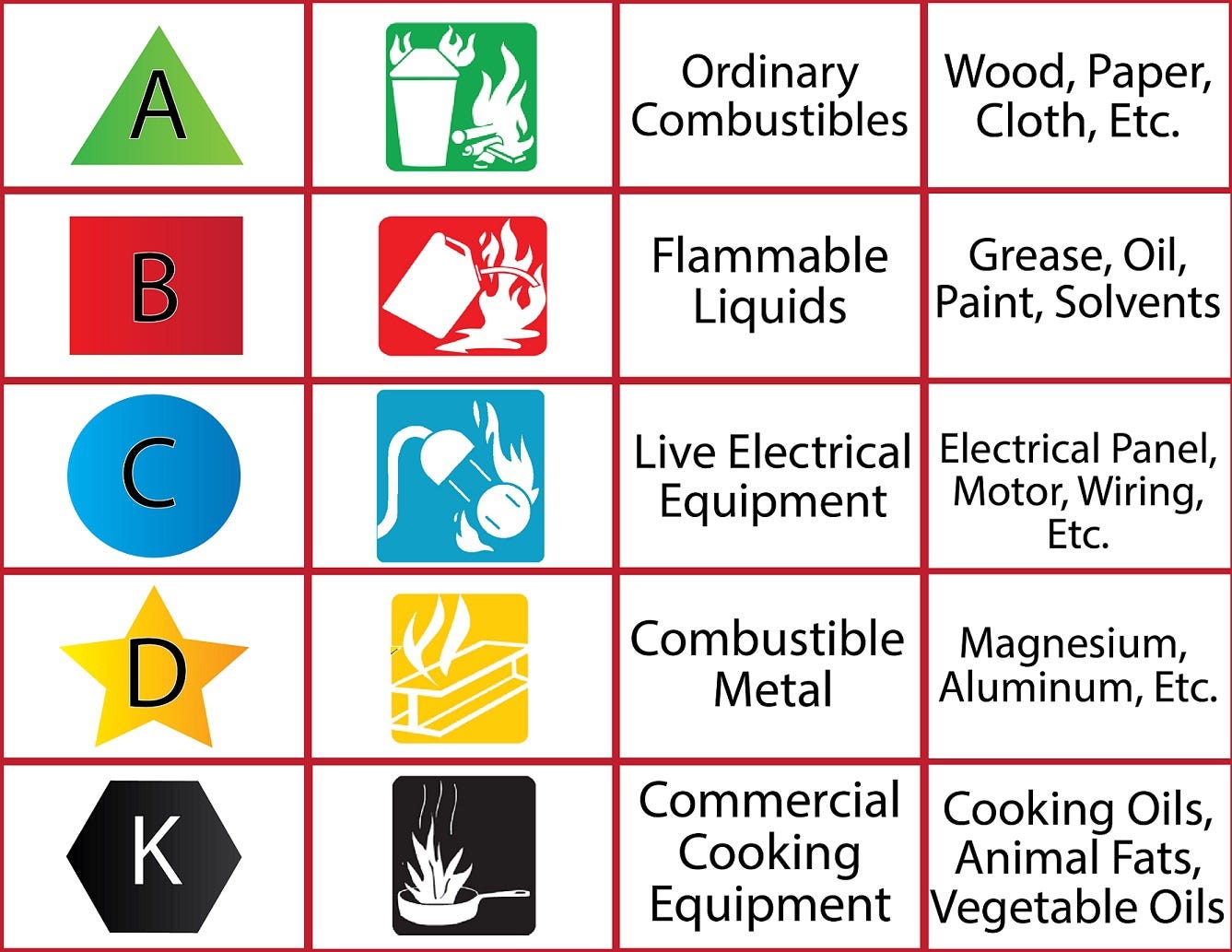 Fires are classified by type: A, B, C, D, or K. This is the second letter in the fire extinguisher rating. For instance, 2B:C will be an extinguisher designed to fight a class C fire. Class A is normal combustibles, such as cloth or paper. B is for a liquid or gasoline fire, C is for electrical fires, D is for flammable metals, and K is for grease fires.
Fires are classified by type: A, B, C, D, or K. This is the second letter in the fire extinguisher rating. For instance, 2B:C will be an extinguisher designed to fight a class C fire. Class A is normal combustibles, such as cloth or paper. B is for a liquid or gasoline fire, C is for electrical fires, D is for flammable metals, and K is for grease fires.
For pilots, we don’t need to worry about flammable metals or grease fires. Sporty’s selection of extinguishers all falls under the “C” category because they are best for us in aviation. Both Halotron and Halon agents are able to fight not only to type C fires, but also A and B, which you may experience in an aircraft. What makes these agents “class C” is that they are not conductors so they will not shock the user if the chemicals come in contact with a live wire. A few additional benefits for pilots: they do not cause thermal shock, meaning they won’t damage electronics or instruments by a sudden change in temperature, and they do not cling to or linger around the cockpit.
Which extinguisher is best for me?
The right fire extinguisher depends on your personal preferences and needs. Each type has its own advantages and disadvantages. If you want to save some money and you have plenty of space in your cockpit (and you prefer an eco-friendly agent), a Halotron extinguisher will work for you perfectly. If you have a tighter cockpit with less room and your budget can support it, a Halon extinguisher might be a better option. Halon is recommended by the FAA, but that does not mean that Halotron is not a capable agent as well. Either one is much better than nothing and far safer than cheap grocery store extinguishers. It's up to you to decide which one matches your needs. Hopefully you never need to use your fire extinguisher, but having one in the cockpit will provide peace of mind and buy you precious time in an emergency.
You can compare fire extinguisher models below:
